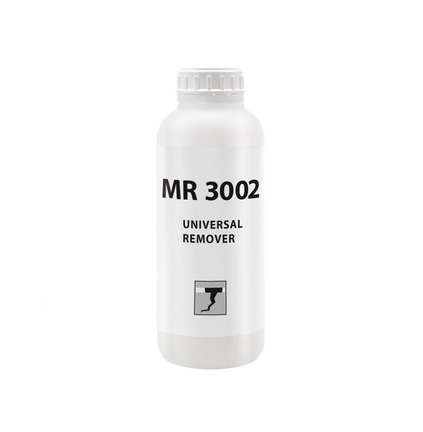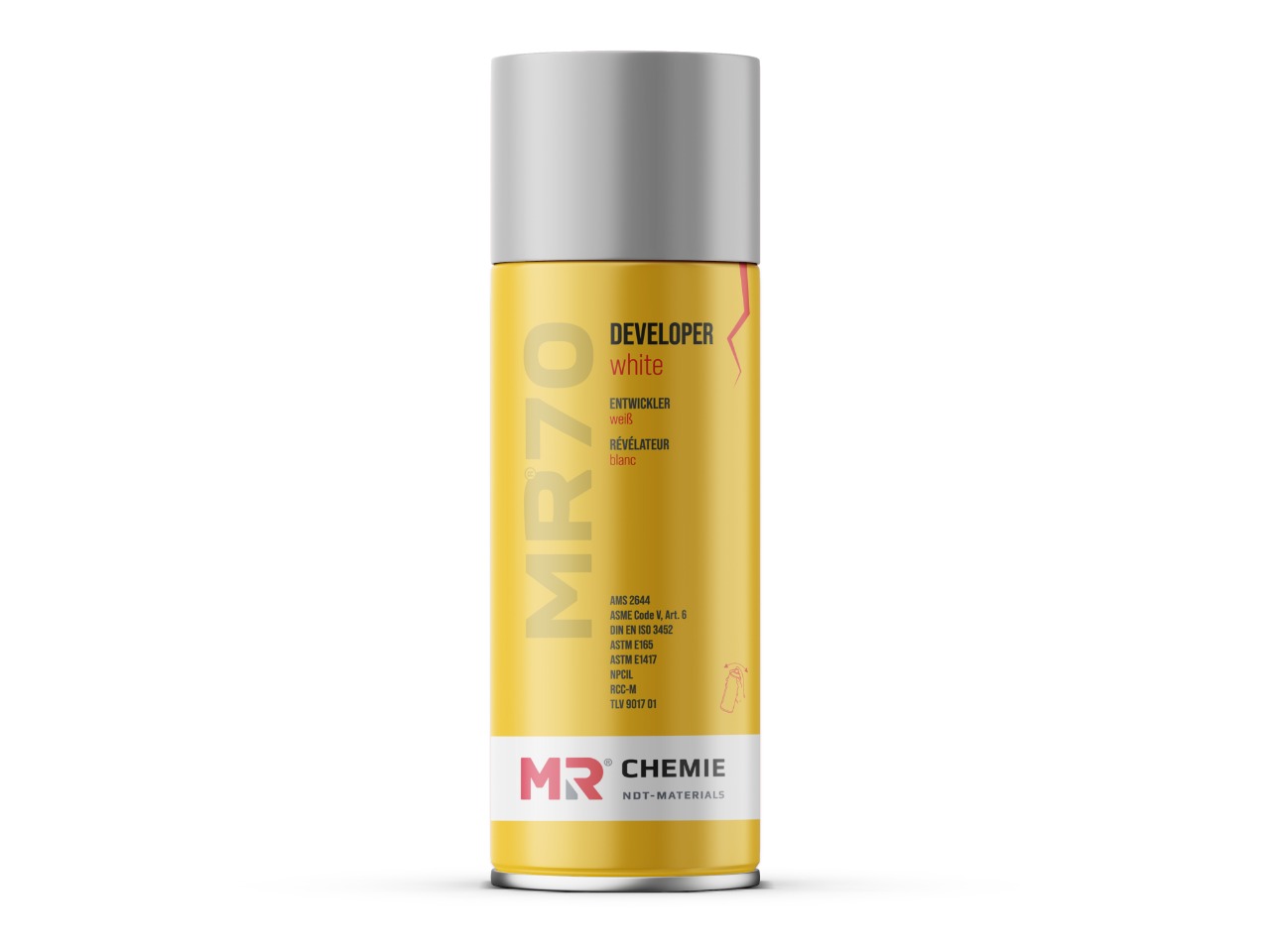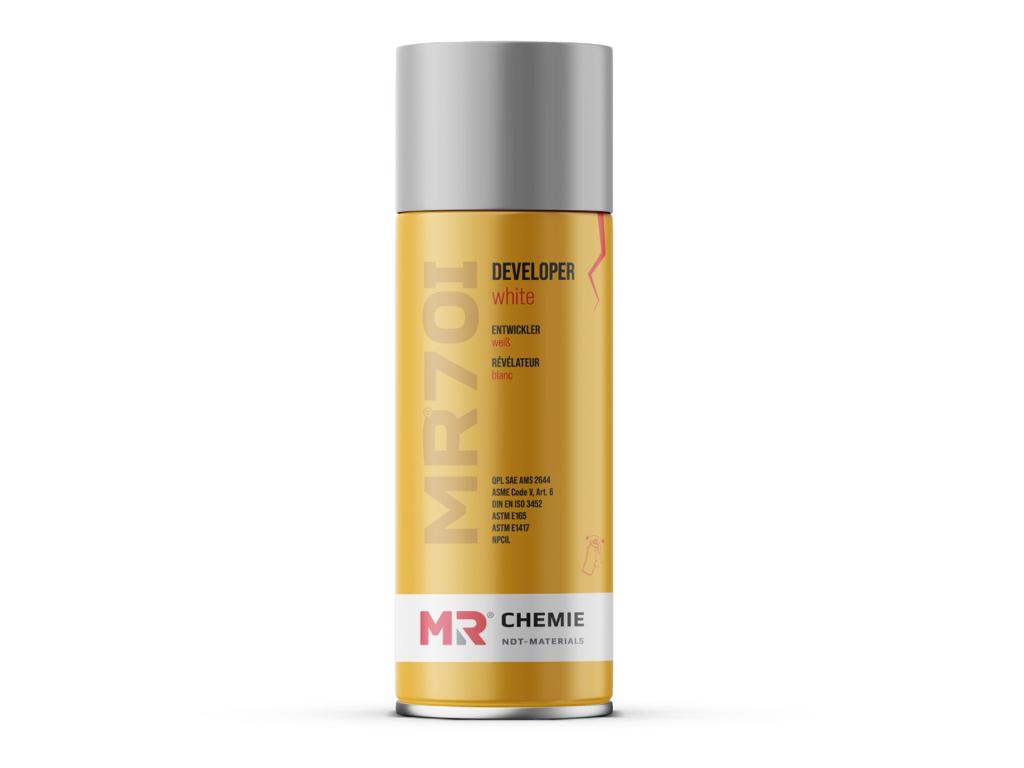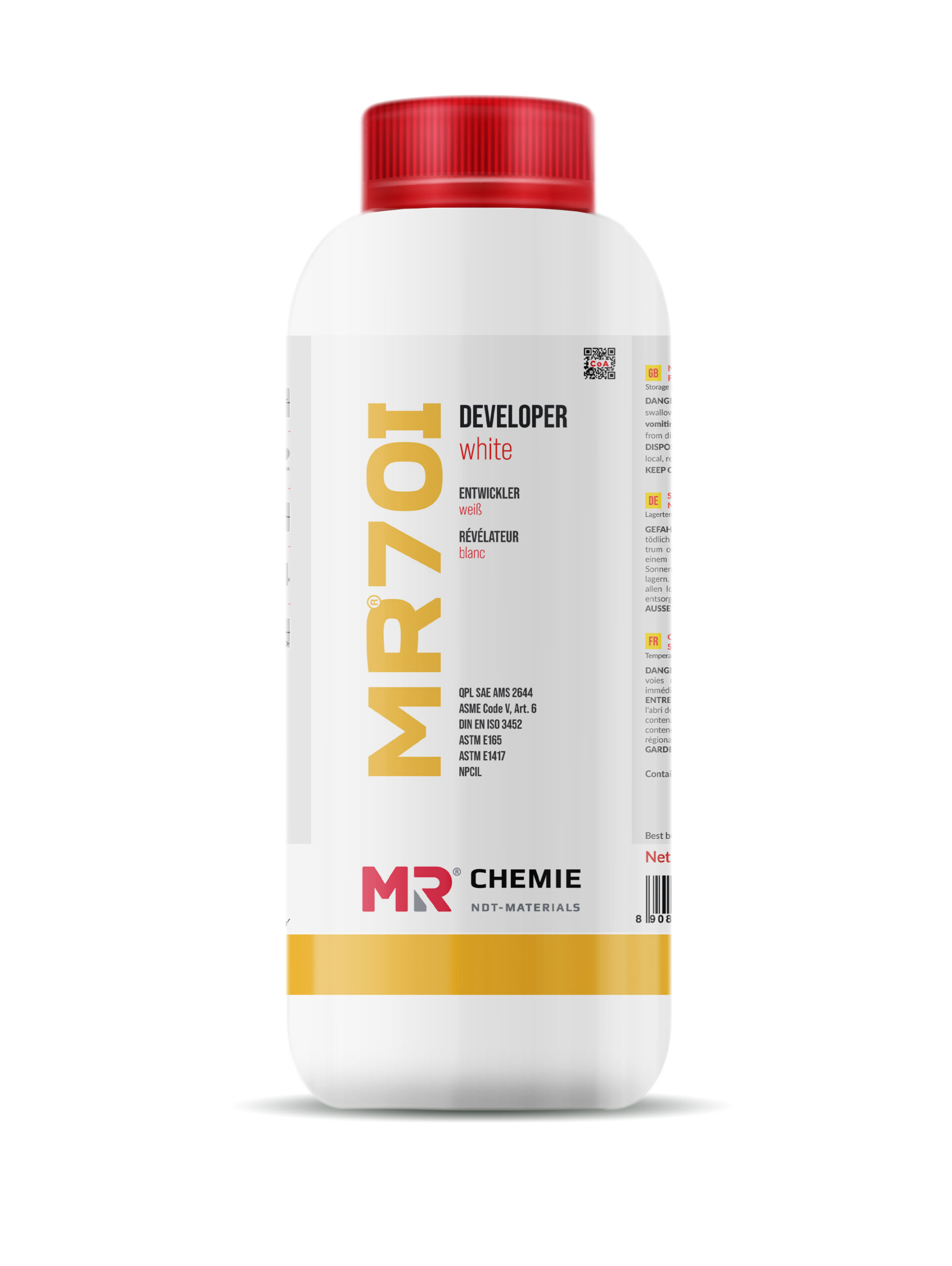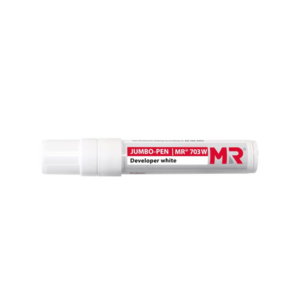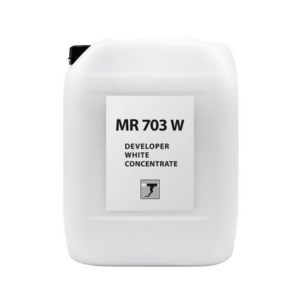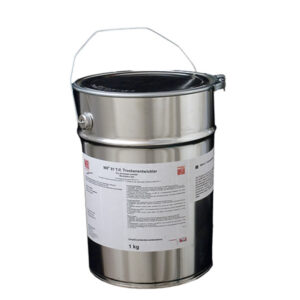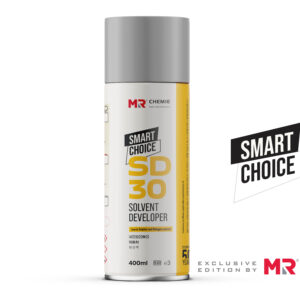MR®70I, Developer – White, Non-Aqueous
MR®70I is a bright white, matte finish, non-halogenated, non-aqueous developer used to enhance the visibility of surface-breaking defects or discontinuities by producing an opaque coating during dye-penetrant inspection.
| SKU | Pack Size | Case Size |
| 2511-0007 | Aerosol 400ml | 10 |
| 2511-0046 | Bulk 1L | 6 |
| 2511-0074 | Bulk 5L | – |
Additional information
| Properties | Appearance – white liquid |
|---|---|
| Approvals | QPL SAE AMS 2644 |
| Family Testing | Penetrant – MR62, MR311-R |
| Recommended Usage | NDT Method – Dye Penetrant Testing |
| Reference Test Blocks | Reference test block type 1 (Ni-Cr panel – 30µm & 50µm) |
Features
- Bright white, opaque matte coating
- Quick dry
- Instant indications - high absorption effect
- Creates a thin homogeneous layer
- Easy to apply and easy to clean
- Controlled application
- Shows clear indications
- Non toxic
- Suitable for all metals (suitability for plastics & ceramics requires testing prior to use)
How it Works
In non-destructive testing (NDT), a developer is a material that is used to enhance the visibility of surface-breaking defects or discontinuities. The developer is typically applied after a penetrant material has been applied to the surface of the material being inspected. The penetrant material will enter any surface-breaking defects or discontinuities (capillary action) and remain in the surface-breaking defects or discontinuities after the excess penetrant has been removed. The developer is then applied to the surface of the material, and it works by drawing the penetrant material out of any discontinuities or defects on the surface (reverse capillary mechanism). The developer forms a coating on the surface of the material, and it absorbs the penetrant material, which causes it to migrate to the surface and form a visible indication.GHS
Aerosol UN Model Regulation - UN 1950 AEROSOLS, 2.1FAQ
Q: What are the different types of developers used in NDT?
A: There are several types of developers used in NDT, including dry powder, wet suspensions and aerosol sprays. The type of developer used will depend on the specific NDT technique being used and the material being inspected. MR® Chemie manufactures the complete range.
Q: How does a developer enhance the visibility of surface-breaking defects?
A: A developer works by drawing the penetrant material out of any surface-breaking discontinuities and creating a visible indication on the surface of the material. This makes any defects or cracks more visible to the inspector.
Q: Are there any disadvantages to using a developer in NDT?
A: One potential disadvantage of using a developer in NDT is that it can be messy and require additional cleaning after the inspection is complete. However, MR® developers are very easy to clean.
Q: Can a developer be used on any material?
A: The use of a developer in NDT will depend on the specific material being inspected and the NDT technique being used. Some materials may be incompatible with certain types of developers, so it is important to select the appropriate developer for the application. MR® developers can be used on all surfaces (suitability for plastics and ceramics require testing prior to use)
Q. Does the brightness of the developer matter?
A. MR® Developers are formulated to give the best background to indication contrast ratio. This enhances the quality and visibility of the defects.
Q. What is the optimum dry time of the developer?
A. The Dry time of the developer depends on the manufacturer. According to the standards, the developing time is minimum 7-10 mins. MR® Developers are formulated using an optimum combination of different volatile solvents which helps leave an even coat on the surface which enhances the absorption rate and improves sensitivity.
